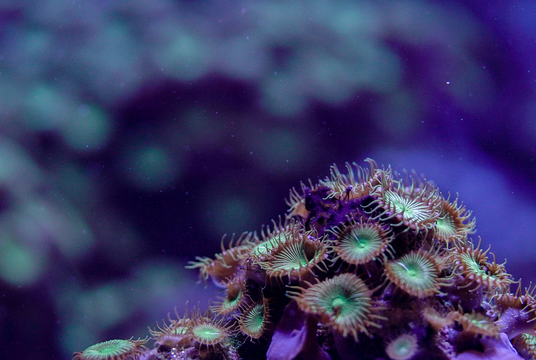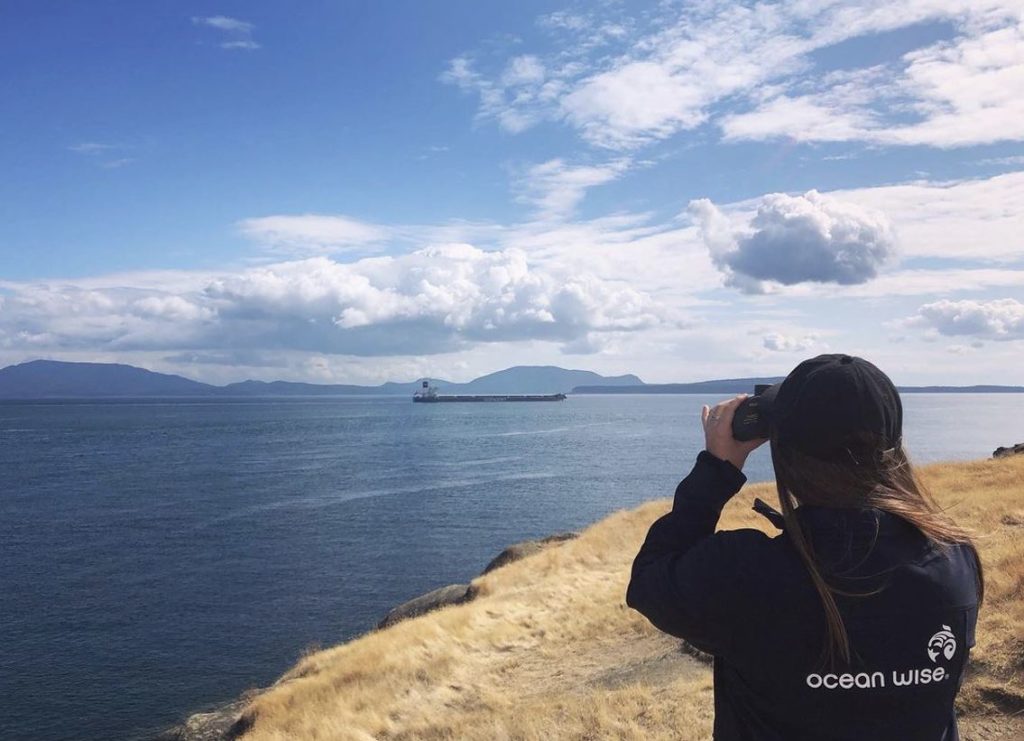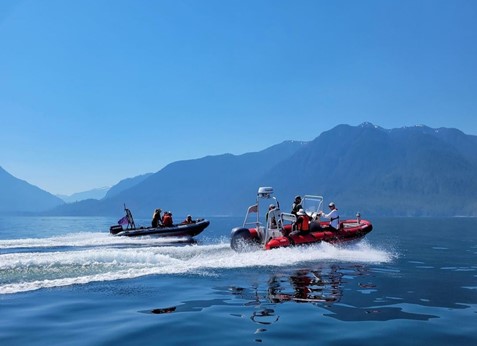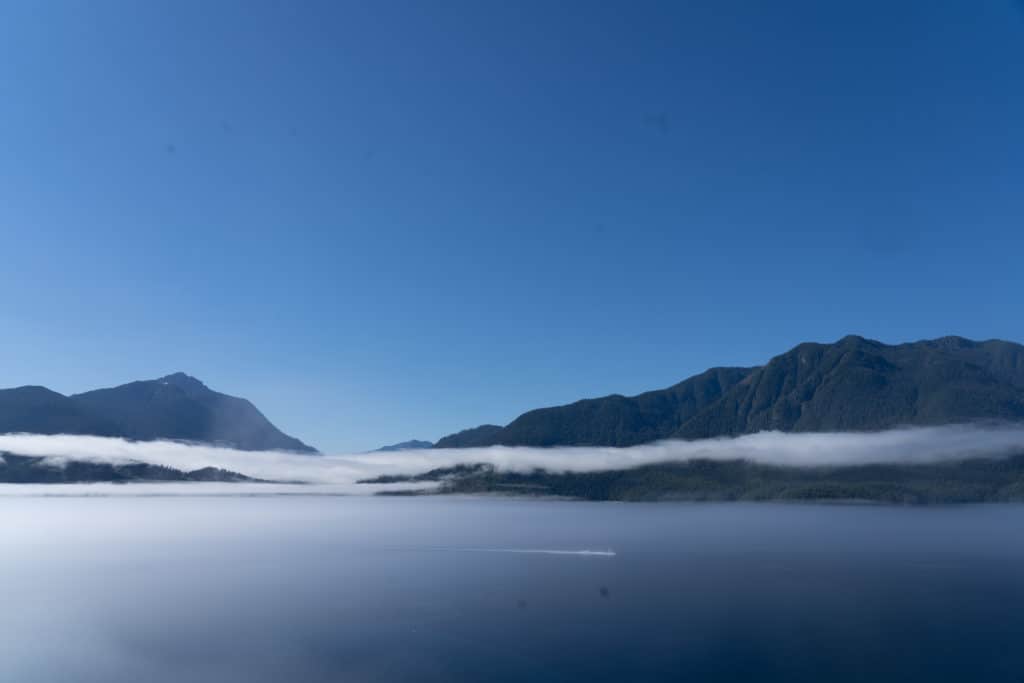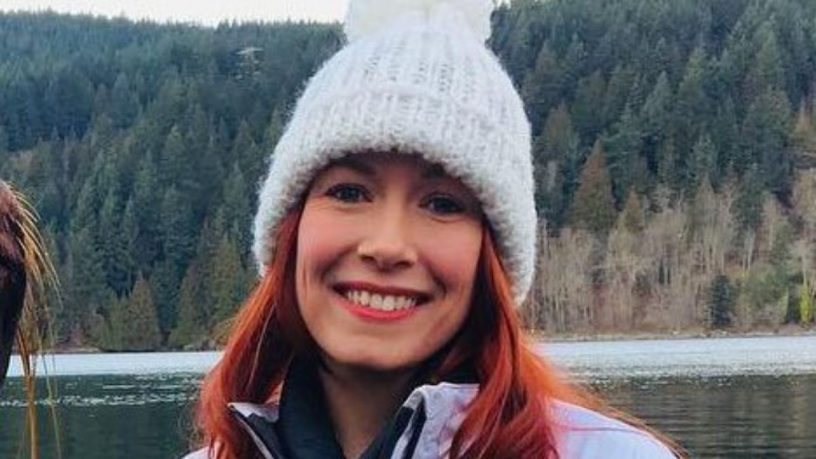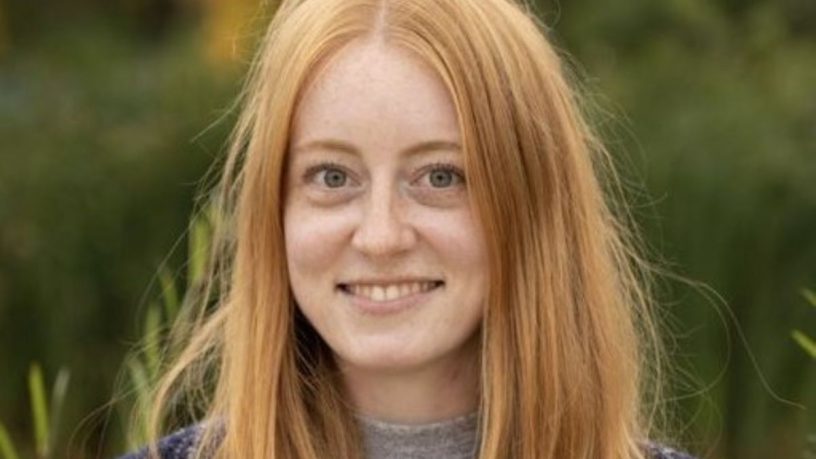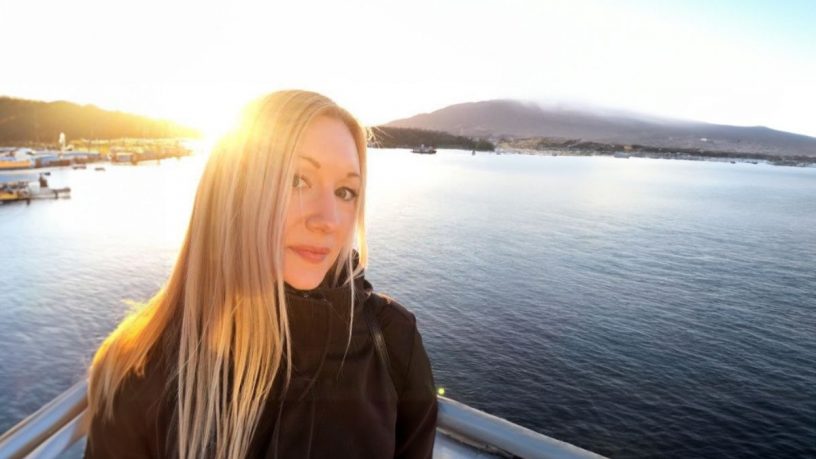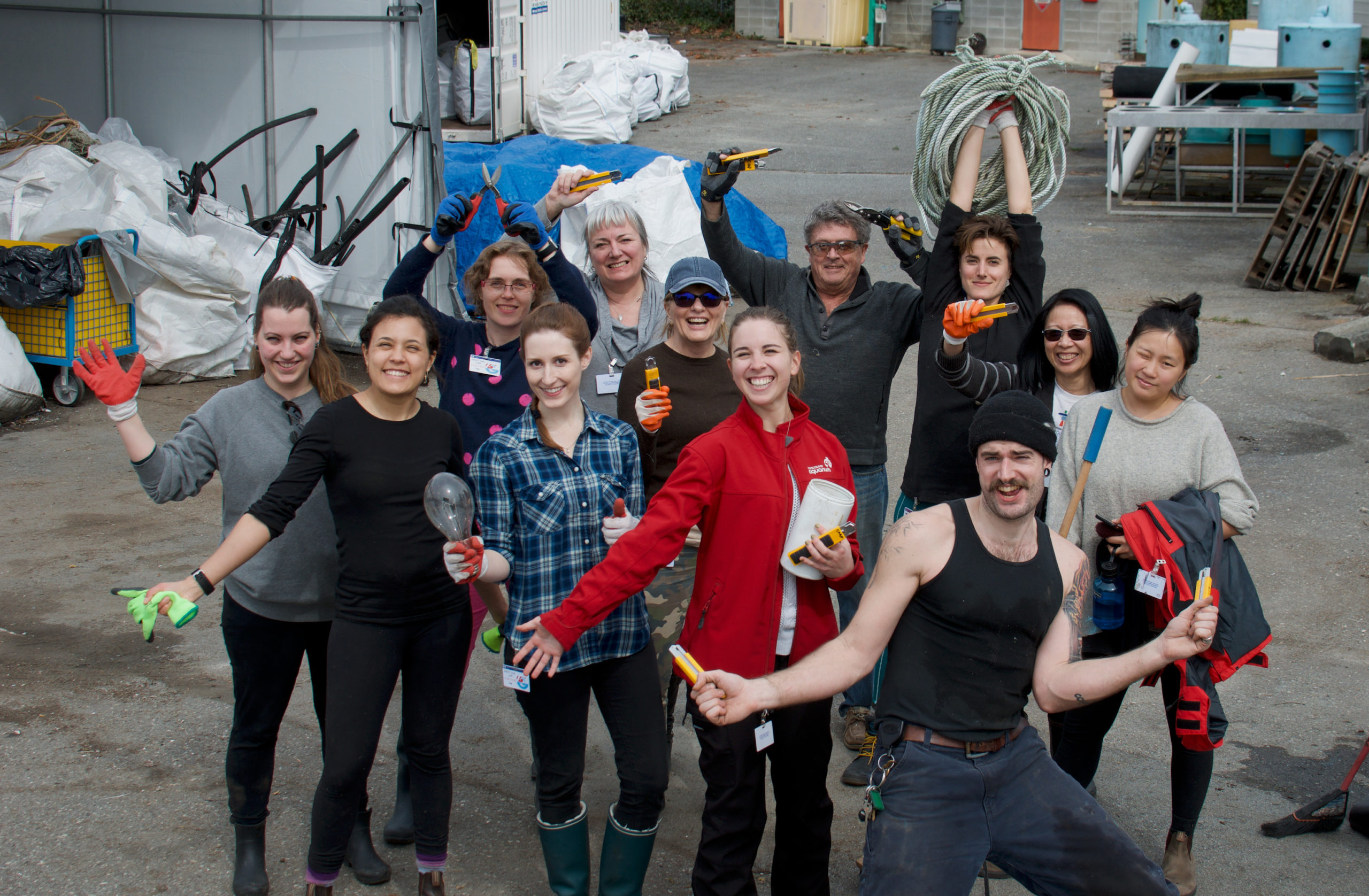
Staff and Volunteers Polish Off Pile of Marine Plastics

The mountain of heavy duty white sacks stuffed with marine debris towered over my head. Scuffed and twisted plastic bottles — many labeled in Japanese — were littered underfoot, and a massive snarl of frayed polypropylene ropes and fishing nets spilled out of a weathered boat. Once bright orange and pink buoys peeked out from the mess. This was the scene after tonnes of marine debris were unloaded at the Pacific Science Enterprise Centre (PSEC) in West Vancouver in November.
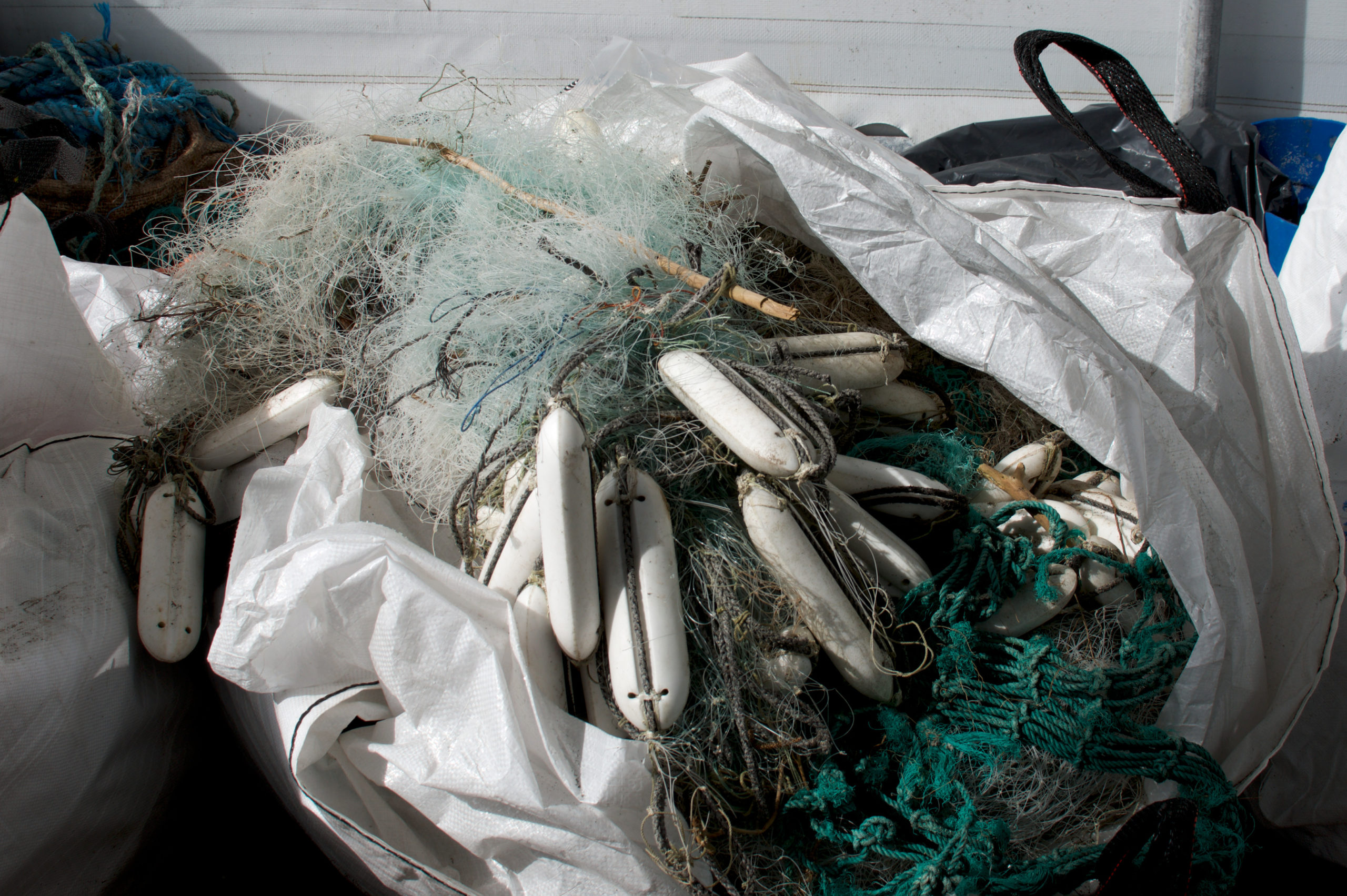
The giant pile of materials was recovered from remote beaches in Haida Gwaii, on the west coast of British Columbia, then transported nearly 30 hours to Vancouver by truck. Hundreds of pieces from the haul are now destined for fame: they are being curated and assembled by Douglas Coupland, internationally-renowned Canadian artist, designer, and author. According to Coupland, the installation, Vortex, will “highlight ocean plastic pollution” and “immerse Aquarium visitors in a contemplative, emotive, and transformative experience at the nexus between art and environment.”
Many of the items collected for Vortex in Haida Gwaii originally hailed from Japan, where they were swept out to sea by the 2011 tsunami. After being pushed around the North Pacific by ocean currents, tsunami debris began accumulating along the west coast of North America in 2012. But plastic is entering the oceans every single day, in many different ways. The scope of the problem is staggering: 8 to 12 million tonnes ends up in the oceans each year, with over 80 percent coming from land-based sources. Exposed to the sun, wind, and waves, plastic items photodegrade and break into smaller and smaller fragments, which can leach chemicals, absorb toxins like PCBs and DDT, or be eaten by animals. Plastics are now beginning to make their way back to humans, in the form of microplastics in fish and shellfish sold in supermarkets.
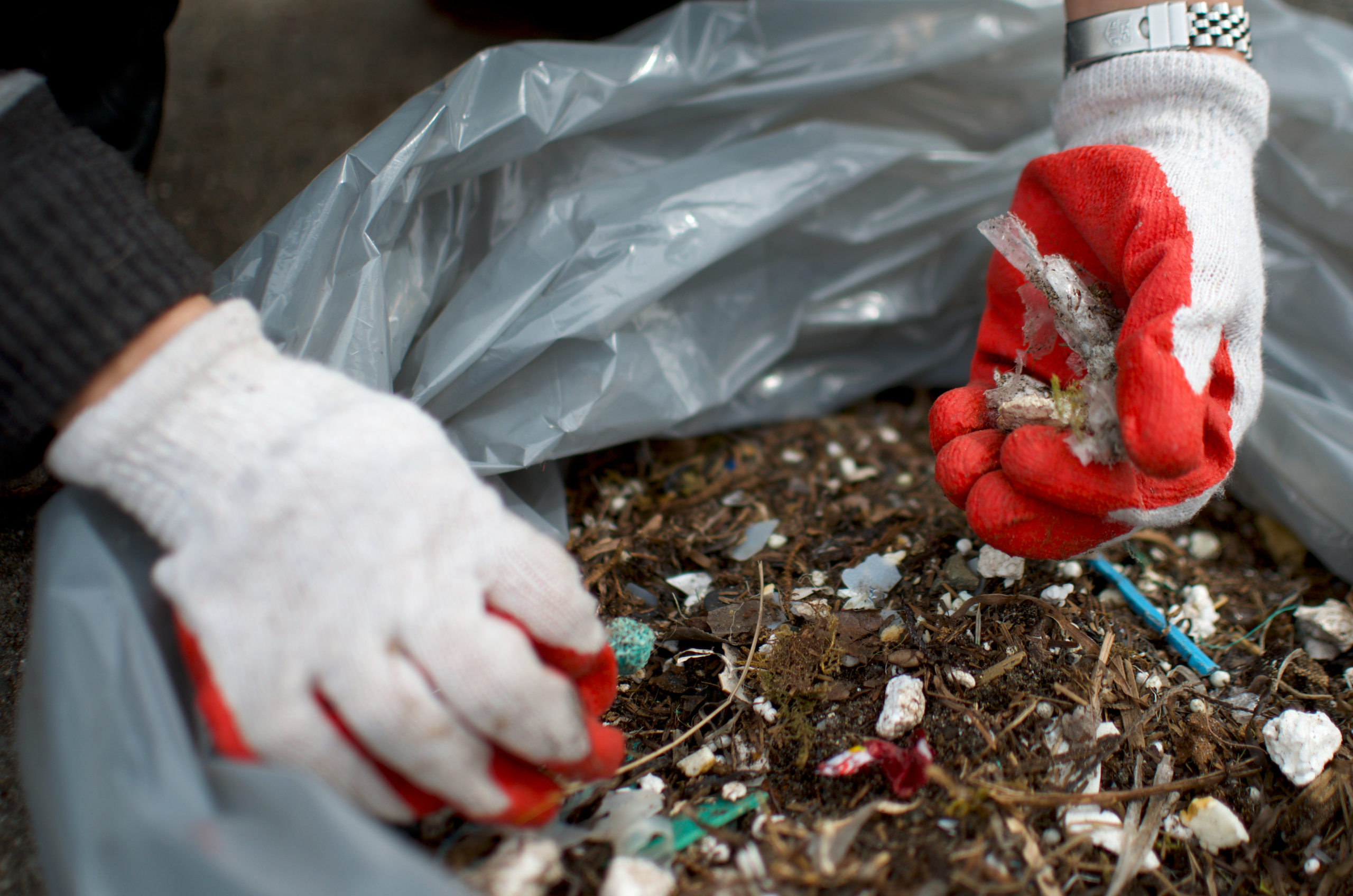
On the morning of April 9, 2018, a small group of Ocean Wise volunteers and staff members assembled in the PSEC parking lot. It was the last day of sorting at the facility, before the recyclable materials would be donated and the remainder hauled to the dump. Since November, sorters had spent countless hours working through the mountain of battered styrofoam, algal-covered flip flop sandals, and hundreds of plastic water bottles. Although the sandy, smelly trash had already been mined for promising pieces for the Vortex exhibit, a daunting pile remained. Fortified with coffee, we set to work. We were joined by Chloé Dubois, the executive director of the Ocean Legacy Foundation, a British Columbia non-profit that locates, collects, and recycles marine plastics. Under her watchful eye, we untangled ropes and organized the final 20 bags of marine debris into categories that could be recycled or repurposed.
The best outcome for the vast quantities of plastic entering oceans and littering beaches is upcycling into new products. Yet sorting marine debris for repurposing is not an easy task. There are six categories of plastic, from polyethylene terephthalate (PET), used to produce clear plastic water bottles, to high-density polyethylene (HDPE), the hard, opaque plastic of milk jugs, and an additional category for other resins, like acrylic and nylon. Marine plastics must not only be divided by resin category, but also sorted into clean and dirty or degraded plastics before the clean items can be recycled. Old, broken styrofoam buoys can be recycled, but only if they are free of algae and sand. Fortunately, clean materials can be repurposed–into fuel, insulation, new packaging–even skateboards.
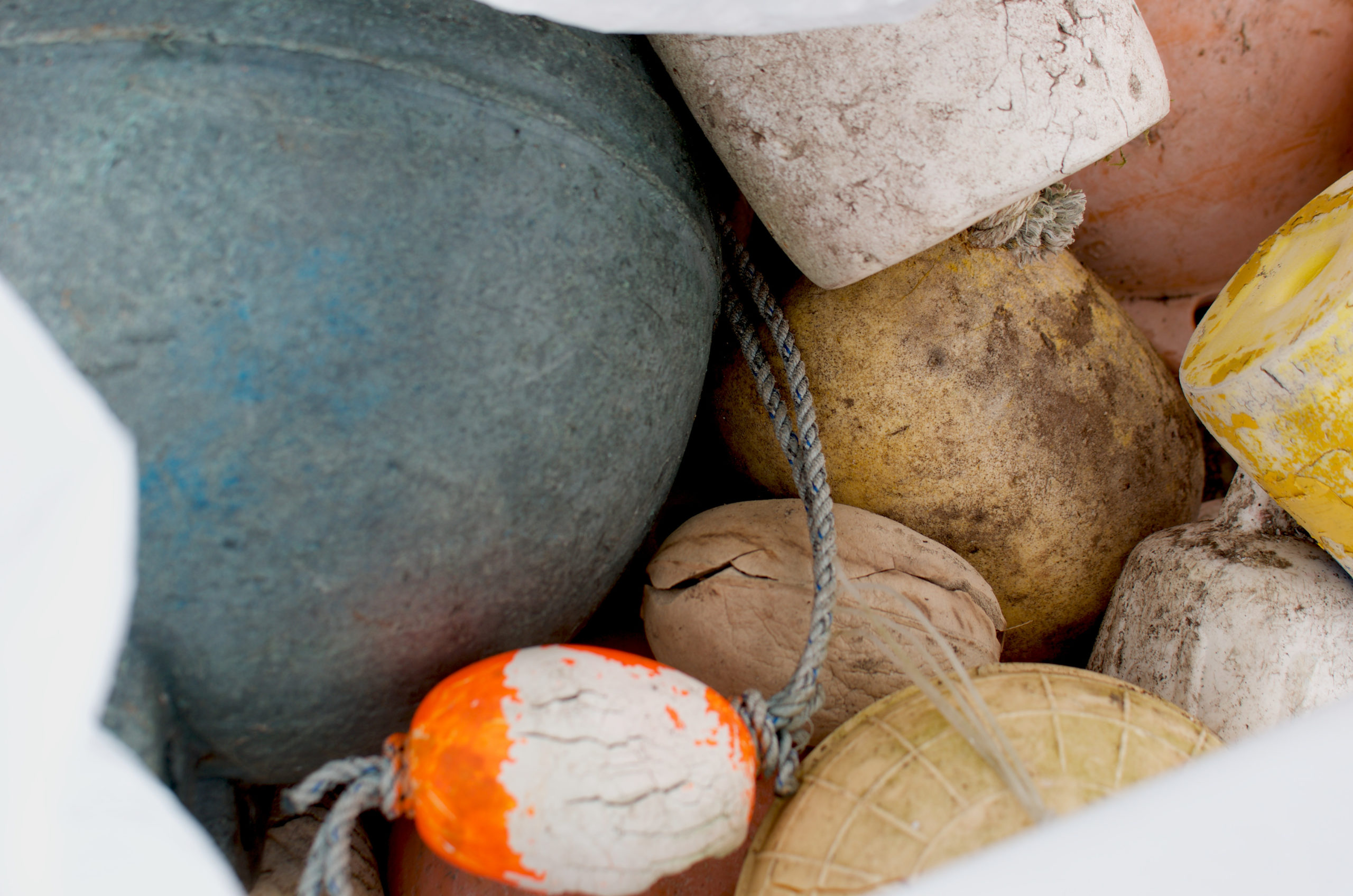
In the yard at PSEC, the unsorted pile was gradually replaced with clusters of bags, filled with single types of plastics. Pink and blue foams were grouped in separate piles. Ropes were coiled and stacked in a giant, heavy sack. Someone swept up the small plastic fibres and fragments that had collected in the sorting area, while others admired a large, glass Japanese lightbulb that had miraculously survived unscathed. We may have been dusty, smelly, and sunburnt, but looking around, it felt like we had conquered a mountain.
Douglas Coupland’s Vortex exhibit opens at the Vancouver Aquarium on May 18. For more information about how you can help keep our beaches clean, visit the Great Canadian Shoreline Cleanup.
Posted May 9, 2018 by Ocean Wise
